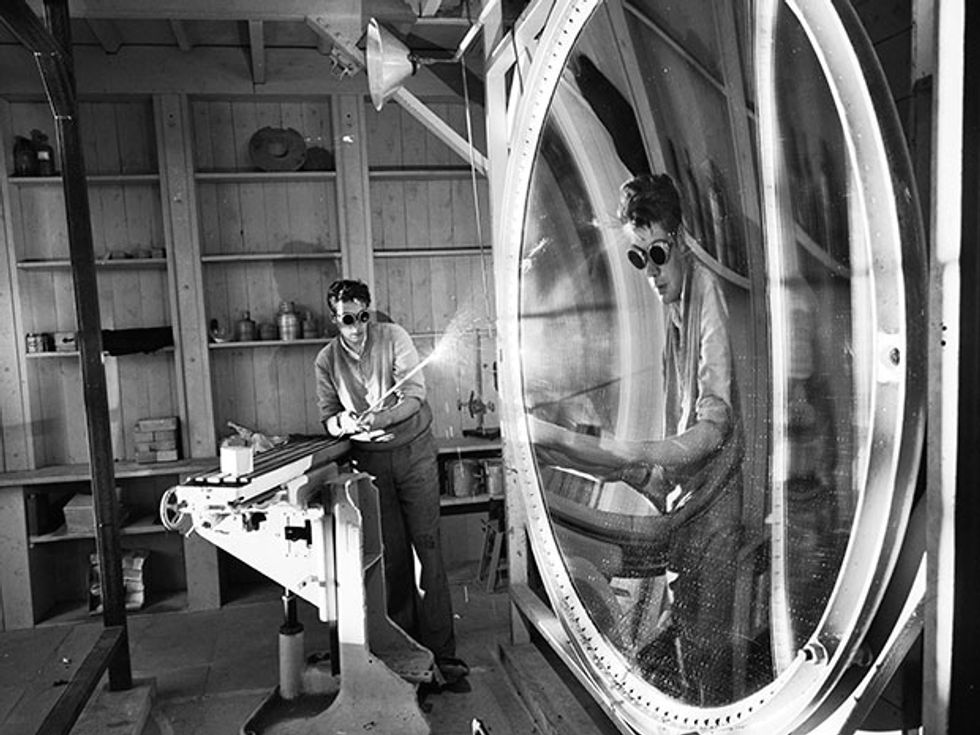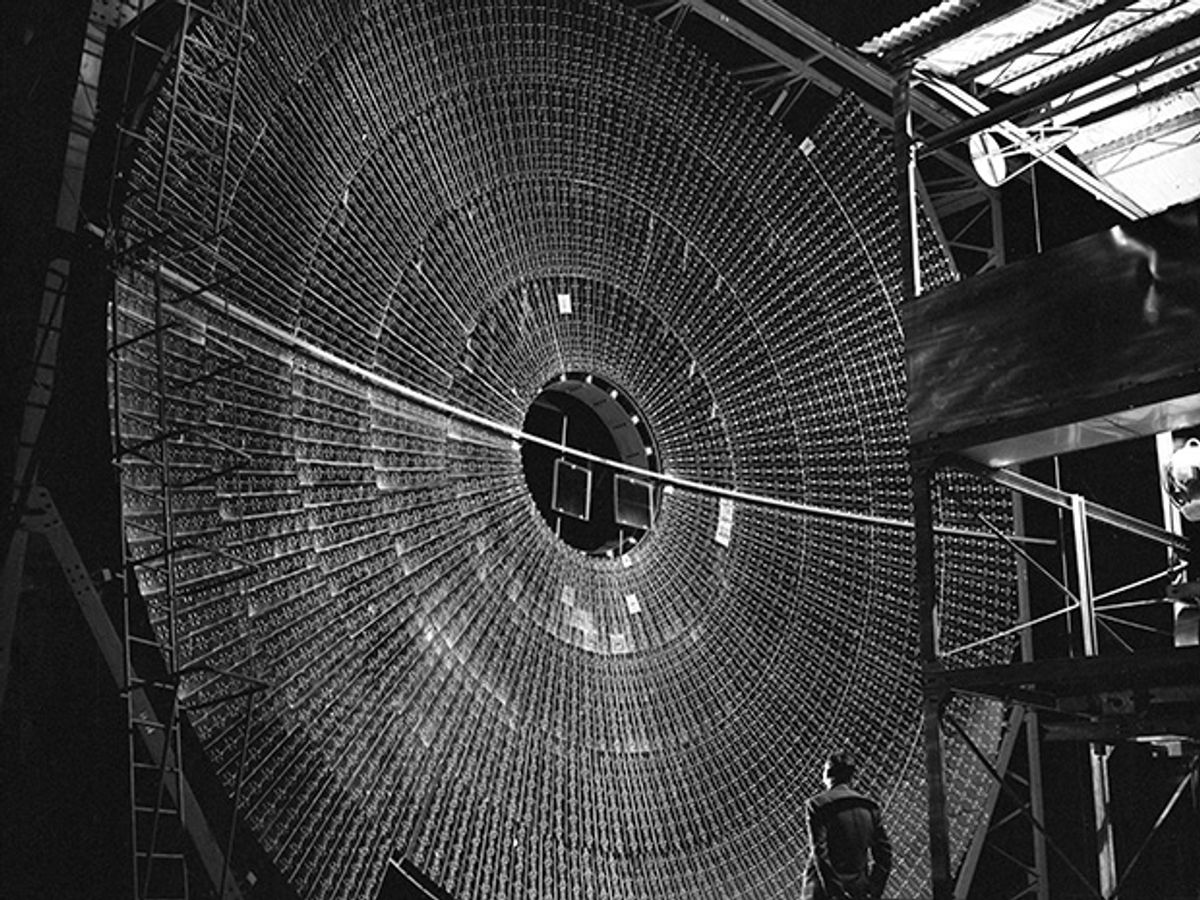Constructed in 1949 in the citadel of Mont-Louis in the French Pyrenees, this double-mirror solar furnace [PDF] concentrated the sun’s rays to melt just about anything that wandered into its 3,000 °C beam. Engineer Félix Trombe [shown below] designed the solar furnace and used it for high-temperature experiments on materials and to demonstrate how to fire ceramics without using wood.
In 1975 the solar furnace was removed from the center of the citadel to a spot near the city walls, where it continues to be used for educational purposes. On a sunny day, the furnace can concentrate 50 kilowatts of solar energy into an area of just a few square centimeters. This is enough focused radiation to instantly ignite wood or liquefy a steel plate in a matter of seconds:
The success of the Mont-Louis solar furnace led to the construction of a bigger solar furnace in nearby Odeillo, which began operating in 1970. With a 1,830-square-meter parabolic reflector illuminated by 63 heliostats, the Odeillo solar furnace is still the largest and most powerful in the world. France’s National Center for Scientific Research uses the Odeillo facility for all kinds of experiments, including testing thermal shielding for spacecraft, developing cladding for the inside of nuclear reactors, and refining methods for producing synthetic fuels without carbon emissions.

The same fundamental technology of concentrating solar energy with mirrors is also used in the developing world to cook food. The equipment is minimal and relatively inexpensive, and no fuel is required. Household solar cookers can easily reach temperatures of several hundred degrees Celsius on sunny days, and they perform as well as traditional ovens and stovetops do, as long as you’re not trying to cook yourself a midnight snack.
Part of a continuing series looking at old photographs that embrace the boundless potential of technology, with unintentionally hilarious effect.
